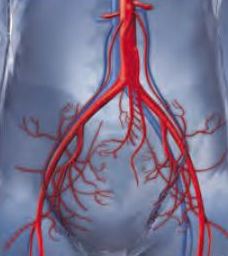 Vaginal Varicose Veins also known as Vulva Varicosities is the most prevalent skin concern among women, yet the most unspoken topic of all. In the medical fraternity, it is believed that, “what you don’t know can harm you”. The same wisdom is perhaps even applicable here. It is imperative for individuals to know and comprehend what vaginal varicose veins are.
Vaginal Varicose Veins also known as Vulva Varicosities is the most prevalent skin concern among women, yet the most unspoken topic of all. In the medical fraternity, it is believed that, “what you don’t know can harm you”. The same wisdom is perhaps even applicable here. It is imperative for individuals to know and comprehend what vaginal varicose veins are.
Varicose veins that develop on the outer surface of the female genitalia aka Vulvas are called Vaginal Varicose Veins or Vulva Varicosities. Pregnancy is the primary cause of vaginal varicose veins. Vulva Varicosities occurs in almost 10% of pregnant women, most commonly in the second trimester – fifth month and is mostly asymptomatic. Moreover, these are also hereditary and can become acute at the time of pregnancy.
Symptoms of Symptomatic Vaginal Varicose Veins
Vaginal varicose veins are mostly asymptomatic; however, in some cases, they can be symptomatic. When symptomatic, sufferers may show discomfort in walking, a little bit of swelling, excessive bleeding at the time of vaginal delivery, and Thrombosis may occur but is quite rare.
In the case of asymptomatic vaginal varicose veins, you would be extremely lucky to know that you have vulva varicosities. It is mostly the health care provider who examines you thoroughly and then informs you about these veins. Some of the basic symptoms would include a feeling of pressure in the vulva area and little swelling in the area. Also, long periods of walking, standing, exercising and sex may heighten the condition.
Most of the times, the vulva varicosities disappear in a month’s time post delivery, but some women may suffer postpartum for a year or more. It is imperative for a woman to share these symptoms with her health care provider since treatments are available. Many women, out of the fear of humiliation or lack of knowledge, do not stay vocal about it. There are several natural treatments available that women can opt for.
Treatment options for healing Vaginal Varicose Veins
Acupuncture
One of the best natural treatments is Acupuncture. There are some amazingly powerful points that can offer tremendous help in alleviating the pain and heaviness caused by vaginal varicose veins. Moreover, acupuncture also assists in increasing blood circulation in the vaginal region and help postpartum in strengthening the blood vessels. It is advisable to consult a Japanese trainer or a Traditional Chinese Acupuncturist who is experienced and well trained in prenatal care.
Chiropractic
Many suggest Chiropractic care to be an effective care during the prenatal stage of a woman. It helps in caring for the nerves, muscles and bones, which in return helps in functioning of pelvic bowel. It is of profound significance to balance the pelvic bones and improve neurological functions of the musculature as it helps in body balancing the effects of the growing uterus and asymmetric pressure that it puts on the pelvis. Make sure that you rope in a qualified and experienced Chiropractor who can help in comforting the woman in need.
Some other ways
Consider the following tips coming from experienced health care professionals:
- Do not stand for longer periods of time, and remember to take frequent breaks and sit.
- Swimming is undoubtedly a brilliant option as it helps in improving the blood flow from the pelvis region.
- Applying cold compresses to the vulva may help and ease discomforts of all kinds.
- Remember to elevate the hips when lying down in order to improve blood circulation.
Pictures
- Partially compressible, tortuous swelling having a ‘bag of worms feel’ on palpation seen on left upper labia majora, minora, and vagina. From: http://www.e-ijd.org/
- Serpentile venous engorgement was noted in right vulvar area (A). From: http://www.ogscience.org
- At 6 week postpartum, venous engorgement disappeared spontaneously (B). From: http://www.ogscience.org
Final Words
Vaginal Varicose Veins do not get the much needed attention in the media, and therefore, awareness for the same is very less. You must visit your physician or a known centre for skin restoration to know more.